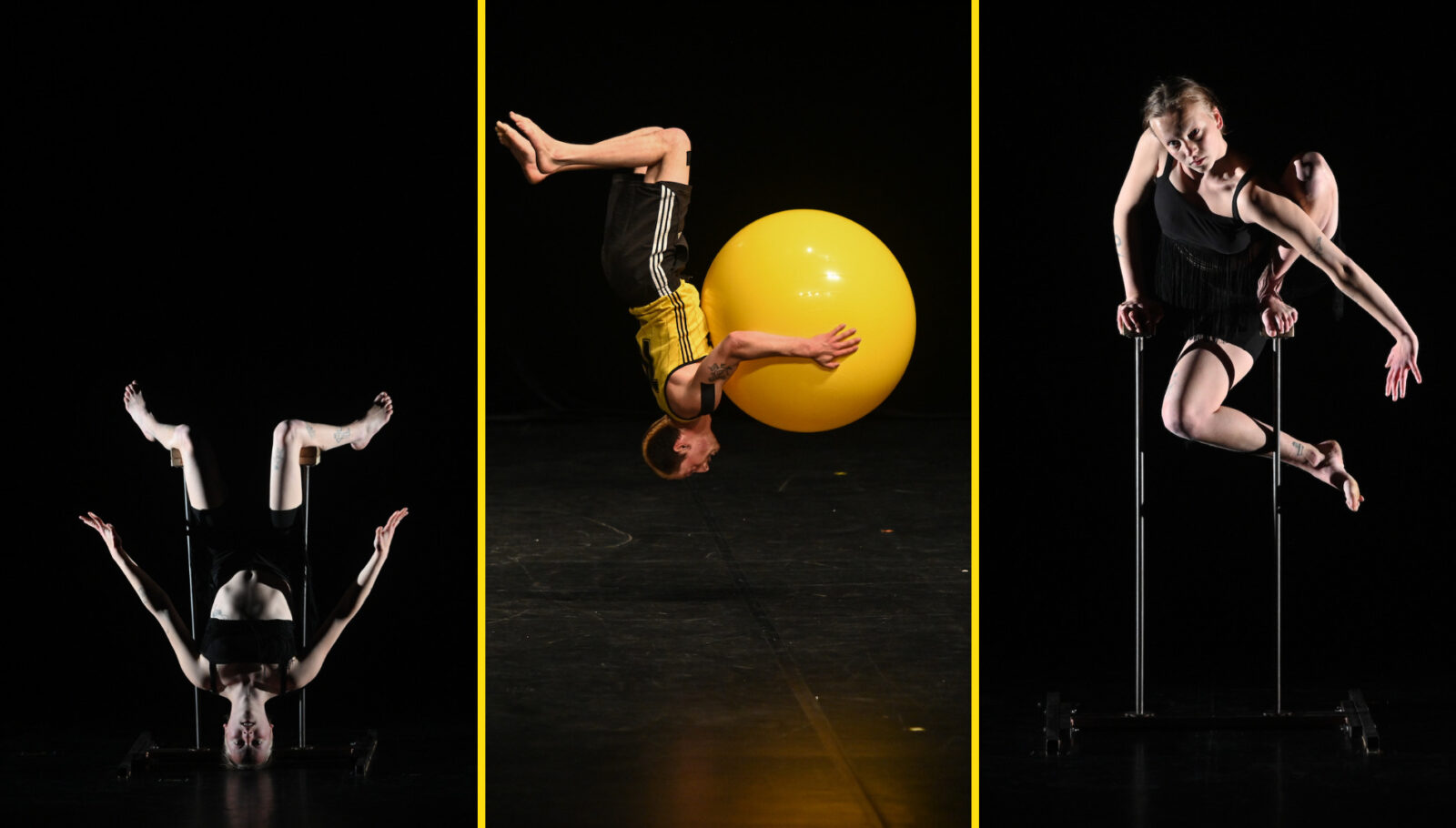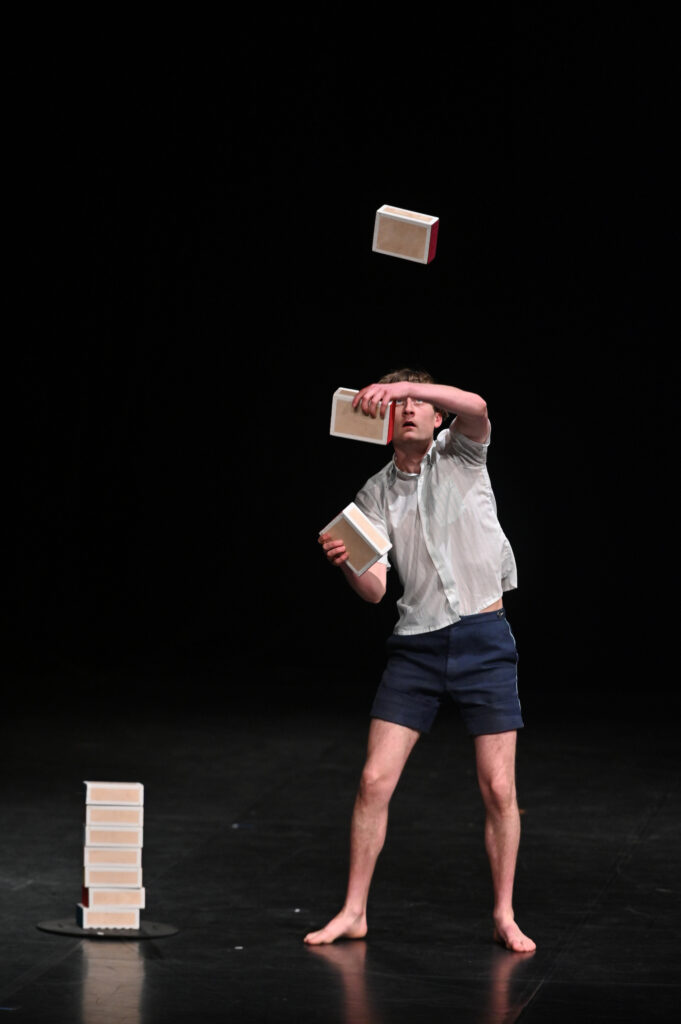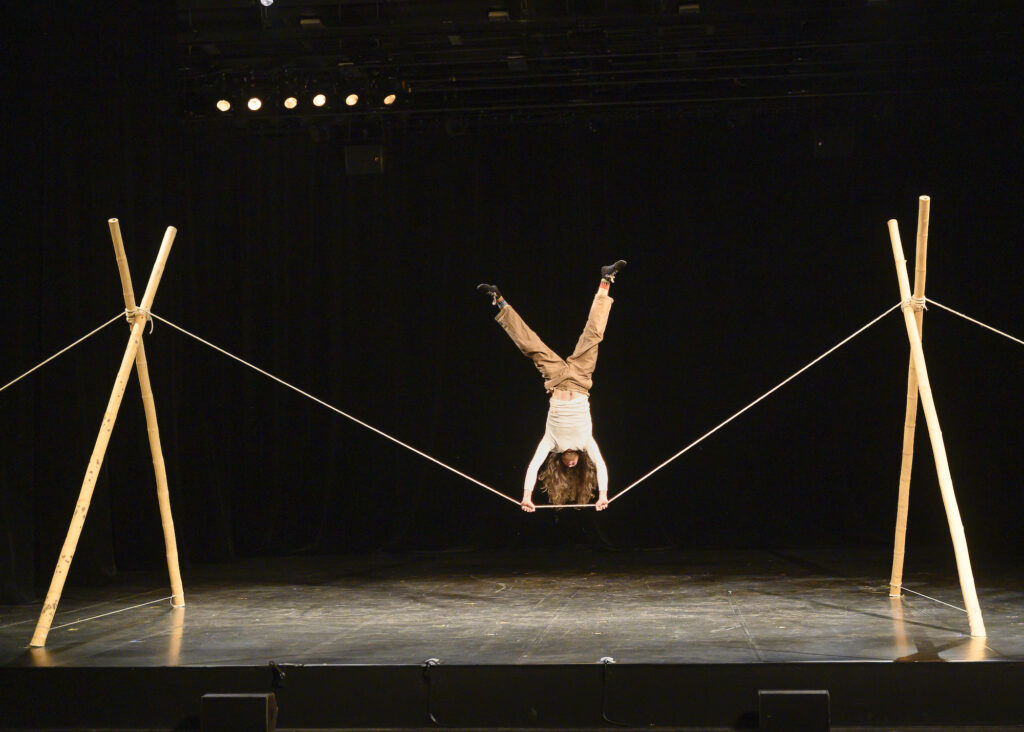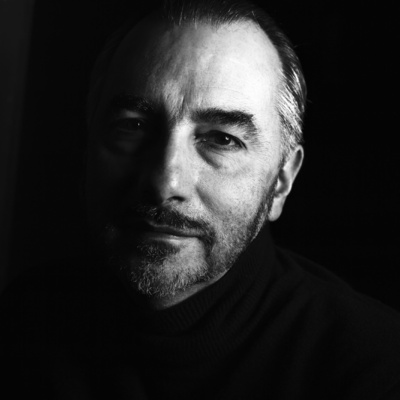Jumping Into the Void: Les Envols of the 2023 Fratellini Cohort
As circus schools around the world wrap up another year, the graduating artists get the chance to showcase their skills in a final presentation that reveals what they have mastered in their time as students—as well as the hot trends of contemporary circus. In this review, Pascal Jacob highlights how the nine performers of Académie Fratellini’s Class of 2023 deploy their talents to mark their own way into the unknown of both their careers and circus future.
Exits, Envols, or Échappées, the final showcases organized each year by circus schools as a means to assess and validate their students’ path after a three- or four-year course of work, tests, failures, and as many setbacks, follow back-to-back and never resemble each other. That is their purpose, their weight, and their appeal.
Between April and June, from one side of the world to the other, several dozen aspiring circus artists lend themselves to an exercise that, because it is systematic, is singularly difficult. Its objective, far from the stakes of creating an end-of-year show to be given to a team of concepteurs, is above all for each graduate to present their final act in a shared sequence, linked (or not) by small transitions.
Exceptionally welcomed onto the stage of the Monfort Theatre because of the ongoing renovations at the Académie Fratellini, the Fratellini Class of 2023 from April 26 to 29 offered hundreds of spectators the opportunity to discover their virtuosity and creativity. Founded by actress Silvia Monfort,who created the second circus school in France alongside Alexis Grüss, Le Monfort is a venue that regularly broadcasts contemporary circus andwas until just recently directed by two co-founders and former members of the Les Arts Sauts troupe. Located on the edge of a very pleasant park amid the former slaughterhouses of Vaugirard, a few hundred meters from where the Cirque à l’Ancienne tent was installed for several years, this theatre is both a place of memory and a formidable symbol of the future.
The nine young artists from the Académie Fratellini’s 2023 cohort are among those who will help shape the circus of tomorrow, and their artistic vision is a reflection of today’s world, multiple and rich in territories to explore. A showcase of this type offers a selection of disciplines that inevitably reflects both the diversity and trends of contemporary circus—but sometimes it also offers nice surprises.

By choosing the rola bola, Viola Dix clearly deviates from the repertoire of techniques usually taught in circus schools and instead adopts a balance discipline from a register favoring the juxtaposition of body and object.Also known in France as the rouleau américain, the rola bola is a small teeterboard that swings from right to left and whose axis of rotation moves constantly. The rola bola discipline, invented by the French performer Vasque in 1898, consists of standing in balance on a lath or tray placed on top of a rolling cylinder, a source of constant imbalance. The challenge is obviously to multiply the number of rolls, to stack the trays, sometimes separated with fragile foot glasses, and thus make the performance even more spectacular. By setting up so many rolls on the stage, Viola departs lightly from the “obligations” of rola bola to create both a scenography, a pretext for successive balance games, and a deconstruction of the typical technique wherein her virtuosity is expressed differently. By playing more on the horizontality than the usual verticality of her apparatus, by focusing more on bodily movement and less on stacking, she manages to subtly change the stakes of this discipline.
Mahamat Fofana is an acrobat and dancer who merges, with great elegance, these two languages that have been perfectly complementary since the 18th century. At the same time light and powerful, Mahamat has developed a remarkable sense of space and an exceptional bodily fluidity that will undoubtedly lead him to fit in as well with a dance company as with a circus troupe. His versatility as an acro-dancer would be a great asset for the choreographer or director who could integrate him as a soloist, as well as for any collective wherein he could bring his radiant personality. Fellow acrobat Basil le Roux plays the card of floor work by mixing humour and technique, false exits and fluid gymnastics, to develop a perfect sequence without any rupture that offers us a beautiful range of his potential. He also crafts a character and funny attitudes that feed his acrobatic sequence by giving it an offbeat personality, a little in the spirit of burlesque cinema.
The principle behind this exercise, which can sometimes seem a bit dry, is something common to most schools around the world. Beyond an exhaustive talent showcase,these envols are also a matter of showing how the notion of diversity has been decisive in the ongoing evolution of the circus arts. Inevitably, the circus school is a temporal reflection of what circus inspires in its students from one cohort to another and how their creativity is tested based on sometimes millennia-old forms. Each year, the students’ proposals are a bit like a sounding board for the creative practices in force from one continent to the next. The Académie Fratellini operates on the principle of apprenticeship, with internships organized in-company throughout the students’ training process. Its cohorts are usually comprised of a dozen students and constitute an important piece of the great annual puzzle of circus trends.
What is striking among this year’s cohort is the finesse of their proposals, developed from a vocabulary considered universal. Mesi Lounela, for example, a hand balance artist, modulates her work according to what she wants to embody on the stage and succeeds in bringing a slight shift to her discipline that makes her unique. Her act is at once both strong and fragile—an ambivalence she assumes as an artistic choice, and which inscribes its lines in space with great panache.
This acuity resonates within the work of the two jugglers, each as different as it is possible to be. Whereas Markus Vikse combines exceptional movement quality with flawless technical virtuosity, Johan Stockmar manipulates his cigar boxes with a clever blend of precision and nonchalance. Their narratives are profoundly different, but it is also for this reason that it is so exciting to juxtapose these two acts on the basis of what they are: the fluidity of the first act, endowed with a powerful and flexible gesture, as a counterpoint to the second, which is carried by a slender silhouette that evolves amid a complex system of piles of cigar boxes that collapse and rise to order. The simplicity of Markus’ juggling, perfectly assumed within an empty space and illustrated cleanly through the white color of his clubs, symbolically confronts Johan’s manipulation work, anchored in a theatrical and offbeat perspective. Johan’s own playing space is delimited by several columns, a setting that conditions the development of his technique.
The same scenographic challenge is at the heart of the proposal of Fanny Padovani, a Chinese pole artist who deepens his playing area through the presence of different poles with unexpected virtues. The notion of pure verticality is overturned by using poles that bend or spring white powdery clouds at each of the acrobat’s motions. This formal diversion of the pole, without obscuring Fanny’s technical performance, is an interesting variation on the theme of using the apparatus for what it is in its only rectitude.
It is a dimension that Roberto Stellino clearly integrates into his own proposal; an integral part of his number consists of him assembling his own device, a slack rope, in front of the audience. This fragile unveiling is undoubtedly a strong part of the mystery of his presentation. Here, the acrobat’s body and his apparatus engage in a first confrontation with one another wherein the stability of one depends closely on the other’s goodwill, without identifying at any point which of them has the most power to achieve it. There is much humility in building one’s own space and justifying one’s presence on a stage with all the more force.
Armand Delattre delineates his own way with his Cyr wheel, an apparatus that by its weight materializes a very physical course. His technical mastery of the discipline is, by extension, one of the common points that connect these nine artists. Each one, through their creation, relies on that fusion so difficult to build between sense and technique. This tiny interstice or prowess manages to justify itself below or through a narrative thread. But most of all, these artists have succeeded in intuitively constructing something that resembles a collective soul.
Each of these meticulously chiseled pieces is rich in integrity and independence by its own merits, yet aggregates toward the others with a beautiful self-evidence,and thus defines these envols under a new subtitle—the advent of a spirit that, beyond the end of one step on the artist’s path, is above all a beautiful promise of the future.
Les Envols
26-29 April, 2023
Le Montfort Theatre
With:
Armand Delattre, Cyr Wheel, France
Viola Dix, Rola Bola, Germany
Muhamat Fofana, Acrobatics-Dance, France
Basil Le Roux, Acrobatics, France
Mesi Lounela, Hand Stand, Finland
Fanny Padovani, Chinese Pole, France
Johan Stockmar, Juggling (cigar boxes), Denmark
Markus Vikse, Juggling, Norway
Roberto Stellino, Slack Rope, Italy
Images courtesy of the Académie Fratellini. Main image: Mesi Lounela (left and right) and Markus Vikse (center) ... Do you have a story to share? Submit your news story, article or press release.









